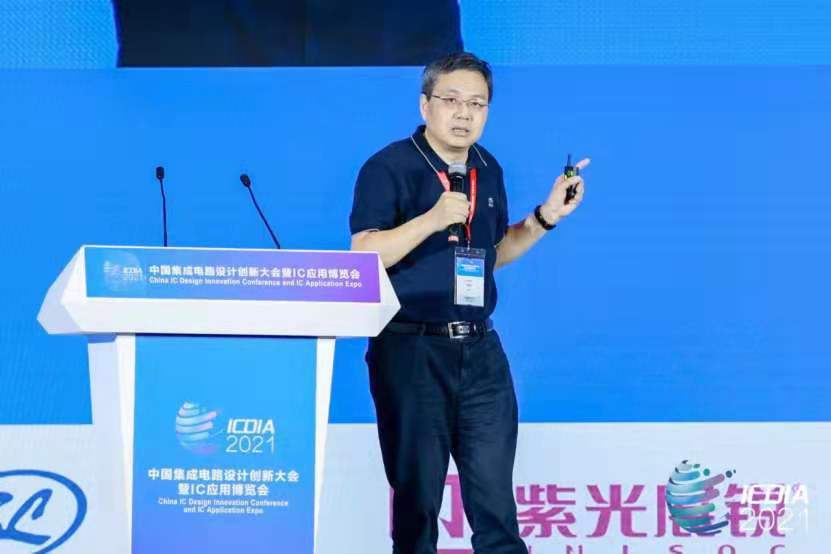
Editing by Greg Gao/WM Zhang
China has the chance to build several large-scale IDM semiconductor companies, judging from the current market and IC technology development trends. This viewpoint is expressed by Chen Xiangdong, chairman of Hangzhou Silan Microelectronics Co, one of China's largest IDM (integrated device manufacturers), at a recent industry forum in Suzhou in late July.

IDM is receiving new attention in China as a major model for scaling up chip-making. The fabless model has been the choice by many startups and investors. As geopolitical changes continue, the Chinese industry ponders over more options for quickening self-reliance development. IDM is considered a feasible and practical option to scale up the business in product output and financial return.
Chen Xiangdong himself is a leading pioneer of the IDM model in China. He founded Silan Microelectronics (杭州士兰微电子股份有限公司) with six partners in 1997 as one of the first private IC manufacturing companies in the country. Headquartered in Hangzhou in eastern China, it has evolved into a full IDM company and went public at Shanghai Stock Exchange in March 2003. It was also one of the first IC companies listed in the country; Its current market value is RMB91.4 billion ($14.5 billion), according to Eastmoney Information, a securities investment company in China.
Silan Microelectronics' integrated circuit production line in Hangzhou Qiantang New District currently has a monthly output of 220,000 wafers, ranking the second in the world in manufacturing capacity for wafers less than or equal to 6 inches. The company's 8-inch wafer fab started construction in 2015; It was put into production in 2017, becoming the first 8-inch wafer fab in China, with a monthly production capacity reaching 50,000 to 60,000 pieces in 2020.
In 2018, the company started constructing a 12-inch special process wafer fab and advanced compound semiconductor production line in Xiamen in southeast China. In 2020, the compound semiconductor production line was put into operation and began trial production.
Silan's products cover many consumer electronics sectors. Its technologies lead in many fields in China, including energy-saving power chips, MEMS sensors, LED lighting and screen display, high-voltage intelligent power module, third-generation power semiconductor devices, and digital audio and video.
Silan's chairman Chen Xiangdong studied IC major in the Physics Department of Fudan University. After his graduation in 1982, he went into chip design in a company in Gansu Province in northwest China. With his outstanding professional skills and diligence, he became deputy factory director at the age of 26.
In 1997, Chen Xiangdong and six partners put together RMB3.5 million ($541,800) and set up Silan Microelectronics.
Mr. Chen has closely followed the global evolution of semiconductor manufacturing technology and industry patterns. He pointed out that 75-80% of the annual $400 billion semiconductor product output is produced by IDMs of Intel, Samsung, Infineon, and NXP, including some through outsourced manufacturing. The American, Japanese and European players possess the markets of products made with special process technologies. They have accumulated their strengths over 70 years in technology, brand, and market share.
China's mainland and Taiwan have few competitive companies in such markets, as they are more specialized. Over the last 10-20 years, few IDM companies have appeared. The IDM model is more suitable for developing products manufactured with special processes involving multiple product design and manufacturing links. Several factors are paving the way for more IDMs: stabilization of silicon wafer size, more advanced manufacturing process equipment available, the slowing down of Moore's Law, and the faulting of pure foundry models. He added that there are more and more calls for more IDM or virtual IDM in China with the support of the Chinese government's industrial policy.
The semiconductor technology has been developed primarily on two tracks – miniaturization of chips and diversification of manufacturing process for different product needs. This led to the off-springing of SiP technology. There is also the vertical progress of the continuous reduction of chip sizes in line with Moore's Law and the horizontal progress of the continuous diversification of device features with special processes. This leads to more disintegration and specialization in the industry, favoring the IDM model.
However, affected by the cyclical business nature of the semiconductor industry, IDM with heavy assets will face certain risks. "Because the IDMs are usually asset-intensive, requiring more capital for fab construction, operation, and R&D in process technology. Therefore IDMs need the support of the relevant policies of the national and local governments, as well as the help of financial institutions," he advised.
RELATED
-
ijiweiTalk EP298: The IDM is Dead?
10-11 17:00 -
Chairman of Chinese leading chip maker CR Micro sees signs of bottoming out in the country's chip market recession
06-19 17:06 -
JW Insights: SiC market sees global semiconductor manufacturers embrace IDM model and compete for 8-inch dominance
05-29 14:51
READ MOST

No Data Yet~







